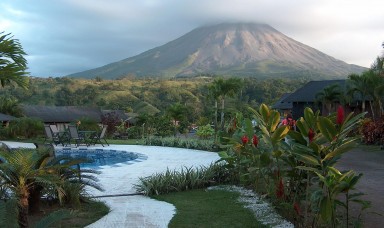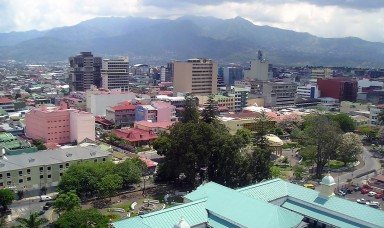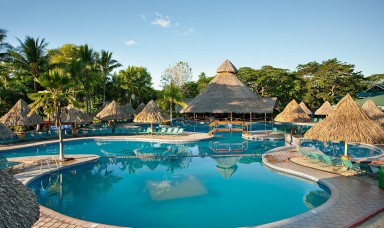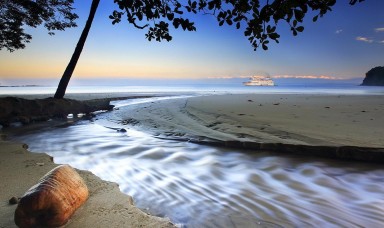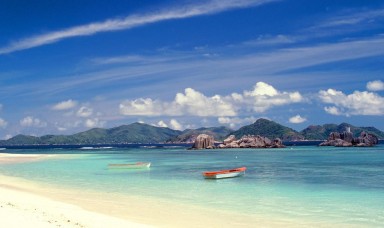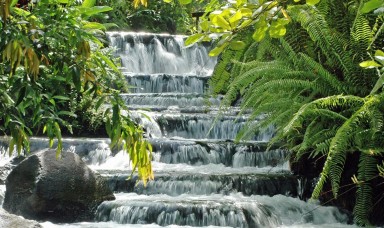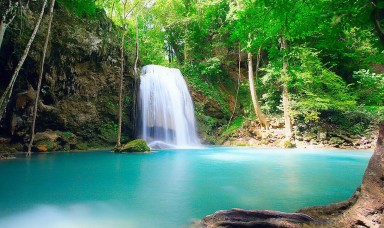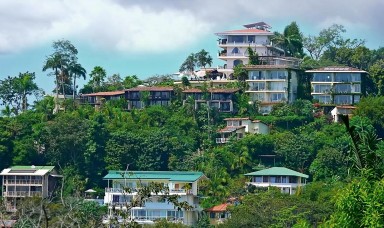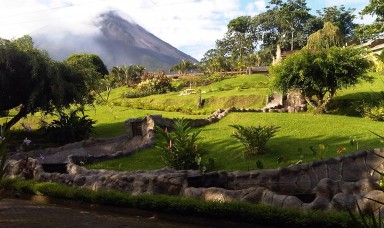 Costa Rica
Costa Rica
Costa Rica , officially the Republic of Costa Rica (Spanish: Costa Rica or República de Costa Rica, is a country in Central America, bordered by Nicaragua to the north, Panama to the southeast, the Pacific Ocean to the west, and the Caribbean Sea to the east.
- GEOGRAPHICAL DATA
- POPULATION
- ECONOMY
- CULTURE
Costa Rica is located on the Central American isthmus, lying between latitudes 8° and 12°N, and longitudes 82° and 86°W. It borders the Caribbean Sea (to the east) and the Pacific Ocean (to the west), with a total of 1,290 kilometres (800 mi) of coastline, 212 km (132 mi) on the Caribbean coast and 1,016 km (631 mi) on the Pacific.
Costa Rica also borders Nicaragua to the north (309 km or 192 mi of border) and Panama to the south-southeast (330 km or 210 mi of border). In total, Costa Rica comprises 51,100 square kilometres (19,700 sq mi) plus 589 square kilometres (227 sq mi) of territorial waters.
The highest point in the country is Cerro Chirripó, at 3,819 metres (12,530 ft); it is the fifth highest peak in Central America. The highest volcano in the country is the Irazú Volcano (3,431 m or 11,257 ft) and the largest lake is Lake Arenal.
Costa Rica also comprises several islands. Cocos Island (24 square kilometres or 9.3 square miles) stands out because of its distance from the continental landmass, 300 mi (480 km) from Puntarenas, but Calero Island is the largest island of the country (151.6 square kilometres or 58.5 square miles). Over 25% of Costa Rica’s national territory is protected by SINAC (the National System of Conservation Areas), which oversees all of the country’s protected areas. Costa Rica also possesses the greatest density of species in the world.
The 2011 census counted a population of 4,301,712 people. Whites, castizos and mestizos 83.63%, while 1.05% are Black, or Afro-Caribbean, 6.12% Mulattoes, 2.4% Native American, 0.2% Chinese, and 6.6% other.[citation needed] An average Costa Rican from the Central Valley has an 67.5% European, 29.3% Amerindian and 3.2% African ancestry.
There are also over 104,000 Native American or indigenous inhabitants, representing 2.4% of the population. Most of them live in secluded reservations, distributed among eight ethnic groups: Quitirrisí (in the Central Valley), Matambú or Chorotega (Guanacaste), Maleku (northern Alajuela), Bribri (southern Atlantic), Cabécar (Cordillera de Talamanca), Guaymí (southern Costa Rica, along the Panamá border), Boruca (southern Costa Rica) and Térraba (southern Costa Rica).
According to the World Bank, Costa Rica’s GDP per capita is US$11,122 PPP (as of 2009); however, this developing country still faces lack of maintenance and new investment in infrastructure, a poverty rate estimated to be 23%, a 7.8% unemployment rate (2012 est.), and a trade deficit of 5.2%. For the fiscal year 2007, the country showed a government surplus. Economic growth in 2008 diminished to a 3% increase in the face of a global recession (down from 7% and 9% growth in the prior two years).
Costa Rica’s inflation rate was an estimated 4.5% in 2012. On October 16, 2006, a new currency exchange system was introduced, allowing the value of the CRC colón to float between two bands as done previously by Chile. This policy’s objective was to allow the Central Bank to be able to better tackle inflation and discourage the use of U.S. dollars. However, as of August 2009, the value of the colón against the dollar has decreased to 86% of its late-2006 value (see commonly available forex trading charts). The unit of currency is the colón, and as of May 2012, it trades around 507 to the US$, and about 660 colones to the euro.
Costa Rica was the point where the Mesoamerican and South American native cultures met. The northwest of the country, the Nicoya peninsula, was the southernmost point of Nahuatl cultural influence when the Spanish conquerors (conquistadores) came in the 16th century. The central and southern portions of the country had Chibcha influences. The Atlantic coast, meanwhile, was populated with African workers during the 17th and 18th centuries.
Costa Rican cuisine is a blend of Native American, Spanish, African and many other cuisine origins. Dishes such as the very traditional tamale and many others made of corn are the most representative of its indigenous inhabitants, and similar to other neighboring Mesoamerican countries. Spaniards brought many new ingredients to the country from other lands, especially spices and domestic animals. And later in the 19th century, the African flavor lent its presence with influence from other Caribbean mixed flavors. This is how Costa Rican cuisine today is very varied, with every new ethnic group who had recently become part of the country’s population influencing the country’s cuisine.

